Buzzing bees, sperm-covered sea stars stun judges of Wildlife Photographer of the Year
The photos can be viewed at London's Natural History Museum.
You can almost hear the bees buzzing as you look at a stunning new image of a ball of plush, yellow cactus bees tumbling over each other in the hot sand of a Texas ranch.
The photo took the top spot in this year's Wildlife Photographer of the Year competition, curated by London's Natural History Museum, meaning the photographer who captured the buzzing bees, Karine Aigner, earned the grand title of Wildlife Photographer of the Year. Other winning images included a photo of the jaws of a baleen whale opening wide to reveal the coarse "hair" the animal uses to filter feed and a snapshot of a spawning sea star floating underwater, suspended in a wispy cloud of sperm and eggs that shimmers in the partial light.
More than 38,500 entries from 93 countries were submitted to this year's competition and judged for their originality, narrative, technical excellence and ethical photography practice, according to a statement from the museum. From those thousands of photos, a panel of experts selected 19 stand-out snapshots as category winners that "highlight the natural world in all its wonder and diversity."
The winning photos and runners up can be viewed in the museum's online gallery or in person at the Natural History Museum, in an exhibit opening on Friday (Oct. 14). Below, you can read about Live Science's five favorite photos from the bunch.
Related: These could be the funniest animal pictures ever
The big buzz
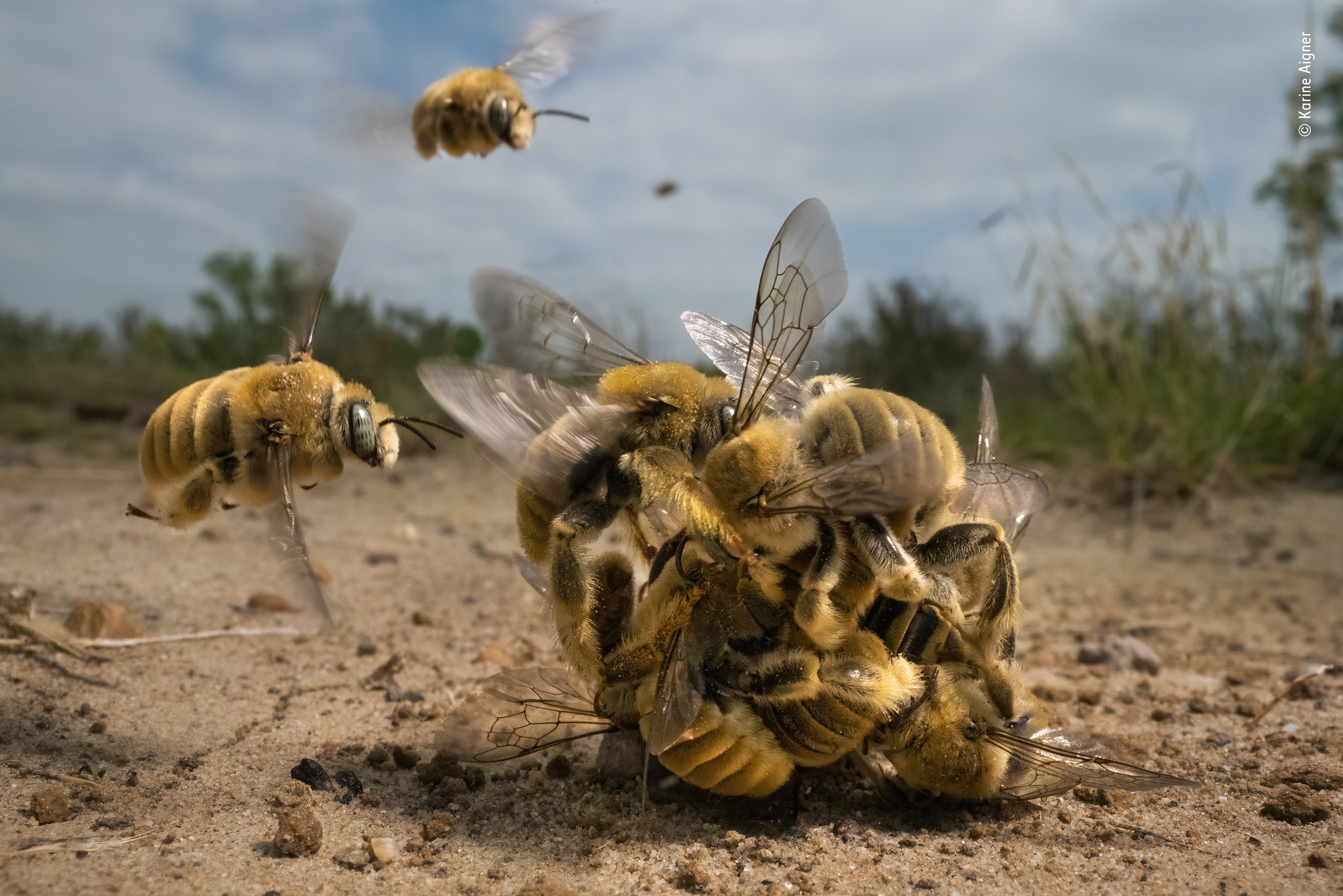
American photographer Karine Aigner captured this teeming tumbleweed of cactus bees (Diadasia rinconis) in May, just after the male bees had emerged from their birth burrows to mate. A single female lies tucked away in the center of the buzzing ball; all the other pictured bees are males vying for a chance to mate with the female.
"The sense of movement and intensity is shown at bee-level magnification and transforms what are little cactus bees into big competitors for a single female," Rosamund "Roz" Kidman Cox, chair of the judging in jury, writer and editor, said in the museum's statement.
Sign up for the Live Science daily newsletter now
Get the world’s most fascinating discoveries delivered straight to your inbox.
The beauty of baleen
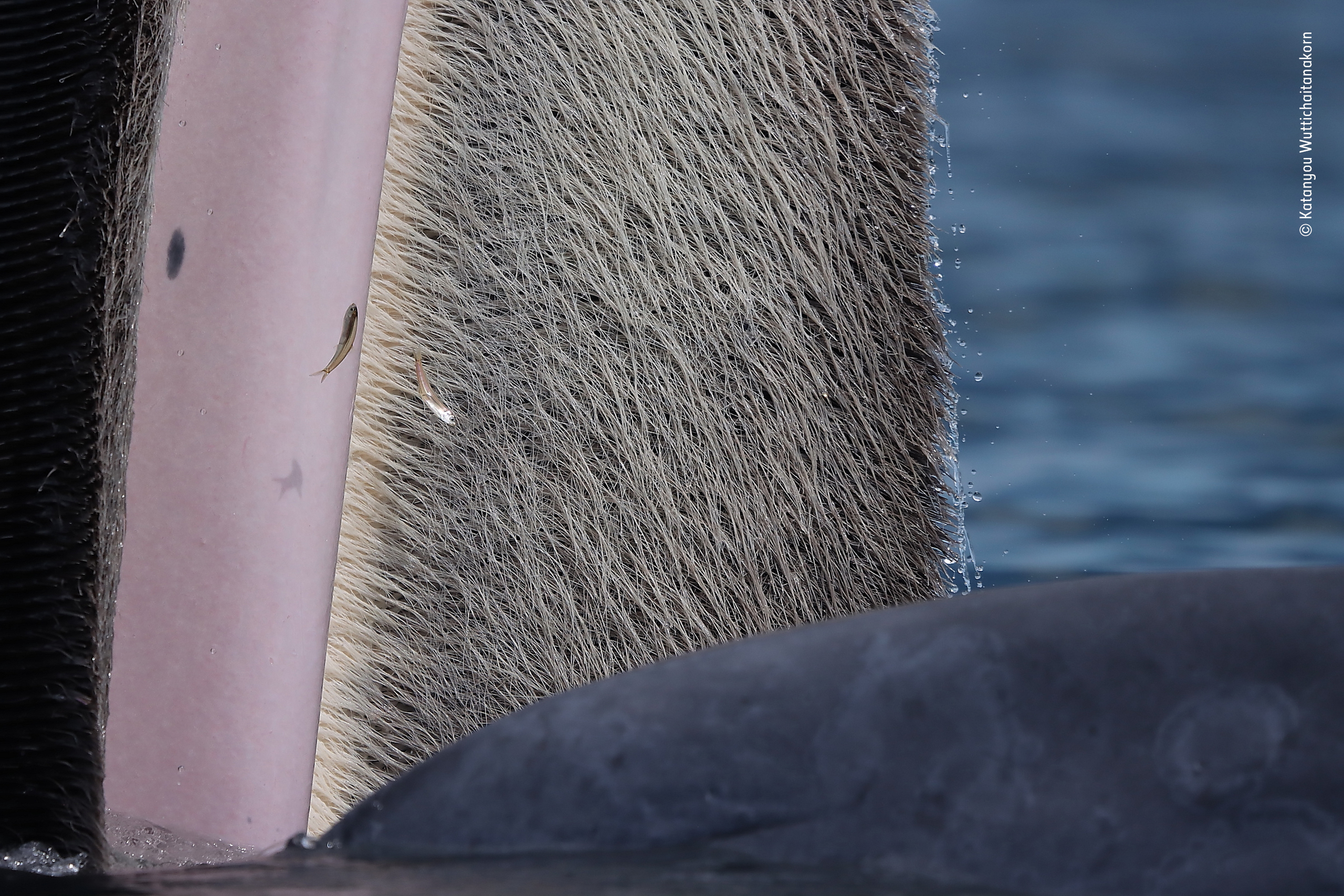
Sixteen-year-old Katanyou Wuttichaitanakorn of Thailand won the title of Young Wildlife Photographer of the Year for his entry to the competition's youth division, open to those aged 17 years and under. His photo, taken in the Gulf of Thailand, shows the mouth of a Bryde's whale (Balaenoptera edeni brydei), a whale species that carries up to 370 pairs of baleen plates in its upper jaws. The whales use these brush-like plates to filter small prey from the ocean water.
"I love how the youngster has gone off the beaten track to show a whale in a totally different composition, while capturing behaviour like filter feeding," Sugandhi Gadadhar, wildlife filmmaker and judge, said in a statement. "And this, coming from a young photographer, gives me hope that they are not just seeing, but observing the very minute details, learning much along the way."
The bat-snatcher
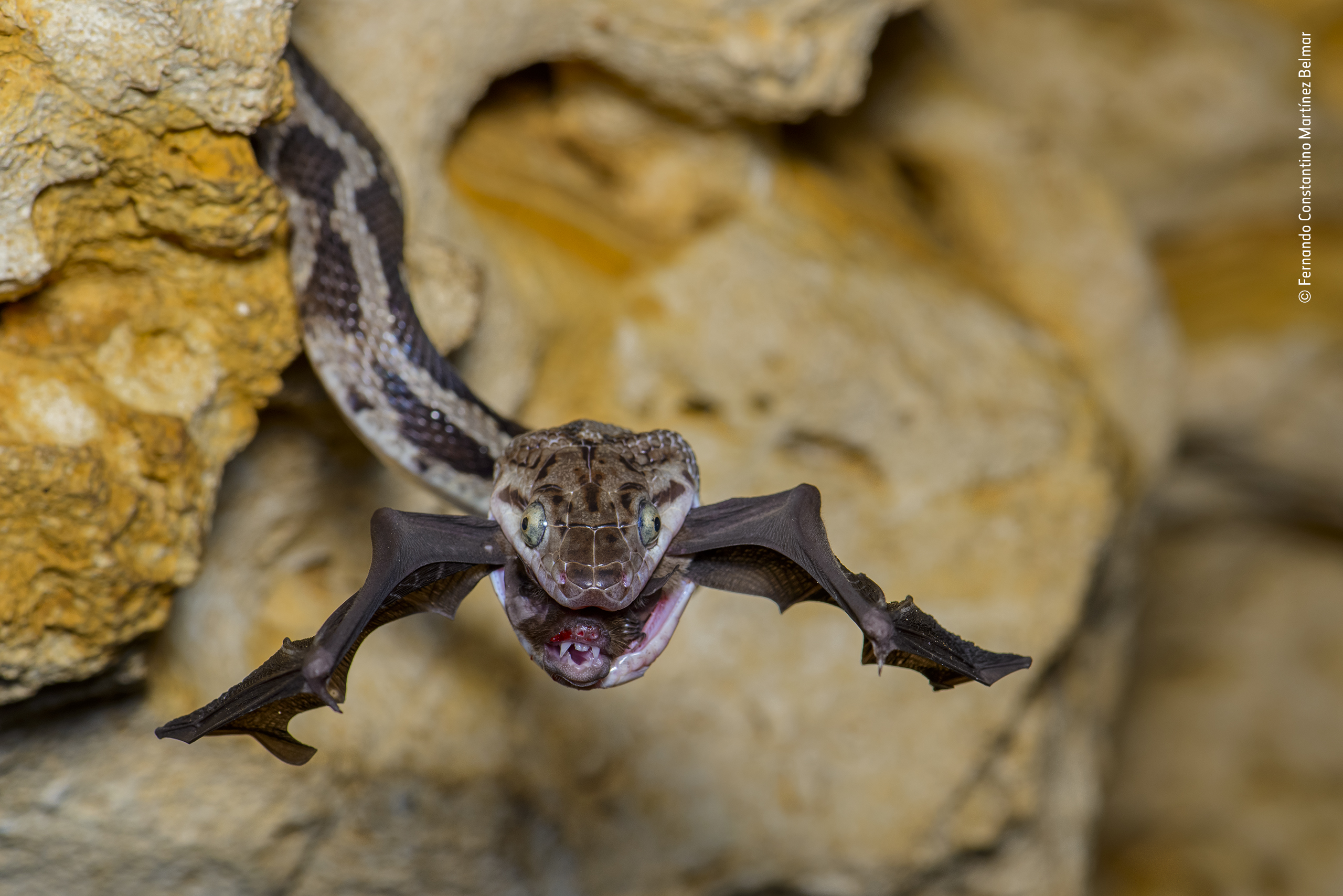
Shot by Fernando Constantino Martínez Belmar of Mexico, this incredible photo shows a Yucatán rat snake (Pseudelaphe phaescens) snatching a bat out of midair. The snake had lain in wait in the aptly named Cave of the Hanging Snakes, located near the village of Kantemó in the state of Quintana Roo on the Yucatán Peninsula. At sundown each day, thousands of bats exit the cave to feed and snakes hang down from crevices in the cave ceiling, hoping to catch a passing bat and swallow it whole.
Shooting star
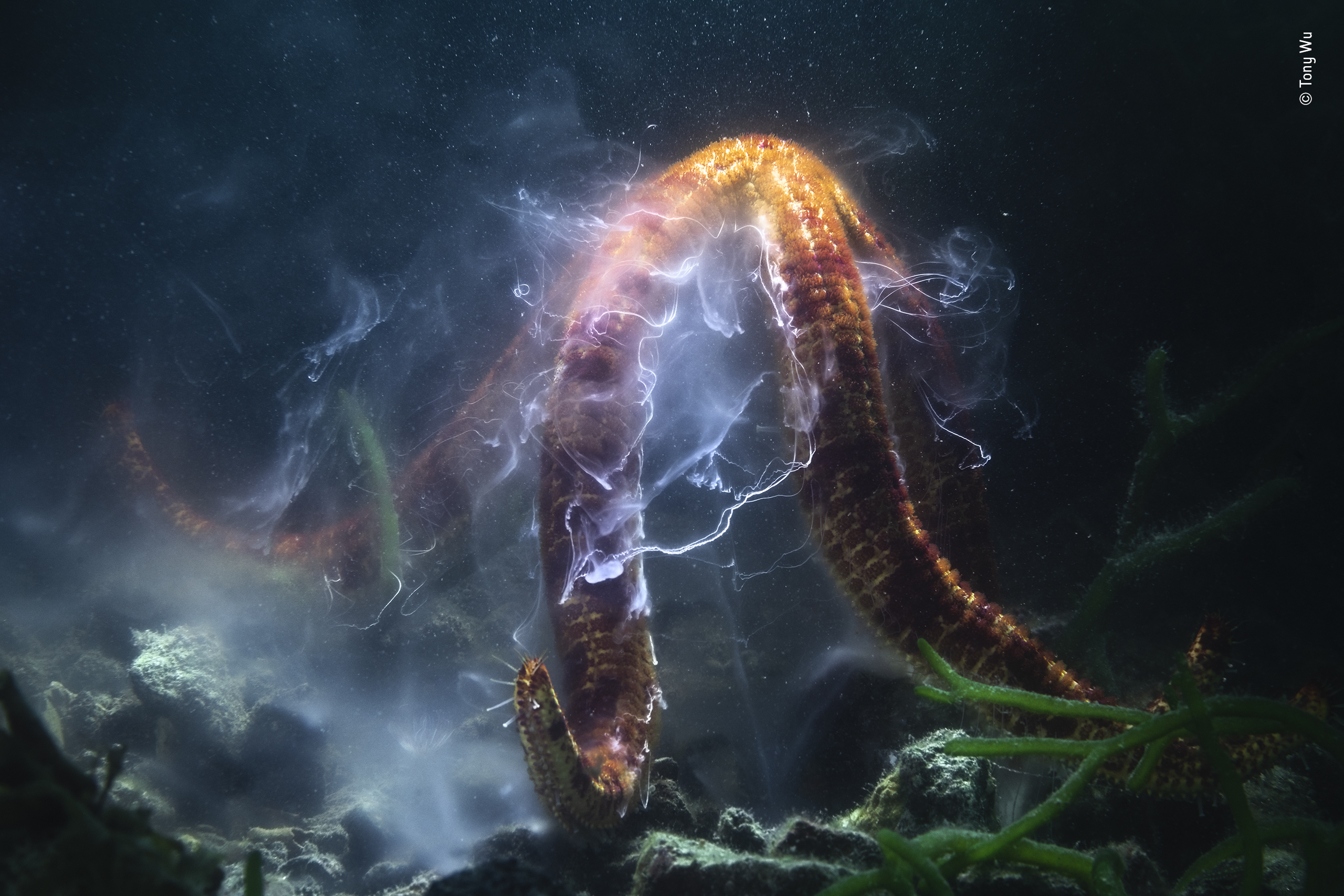
Tony Wu of the U.S. and Japan captured this image of a giant sea star (Pisaster giganteus) "dancing" in a nebula-like cloud of eggs and sperm in Kinko Bay, Japan. The undulating motion of the sea star may help to push the eggs and sperm into the current, where they can collide and fertilize, according to a statement.
"This image reminds me of something from a science fiction film," Natalie Cooper, principal researcher at the Museum and judge, said in the statement. "It's a technically brilliant image, with a strong atmosphere of mystery that draws you in."
Ndakasi's passing
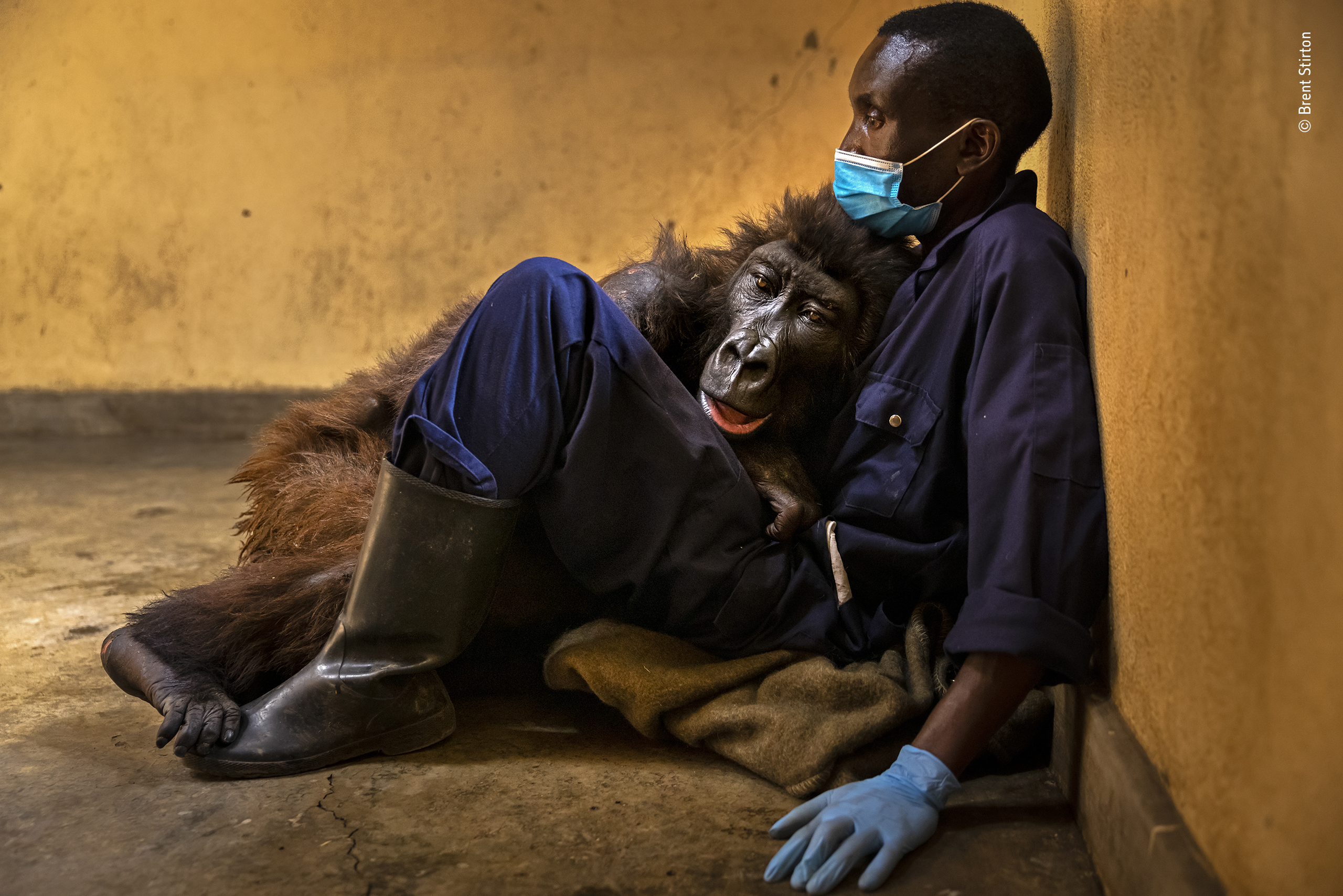
Brent Stirton of South Africa memorialized the death of a mountain gorilla (Gorilla beringei beringei) named Ndakasi who'd been rescued in 2007 after her entire troop was killed by a "charcoal mafia," a criminal group participating in the illegal charcoal trade. Here, Ndakasi is pictured at Virunga National Park in the Democratic Republic of the Congo, cradled by ranger Andre Bauma, her rescuer and caregiver of 13 years.
"It was Ndakasi's sweet nature and intelligence that helped me to understand the connection between humans and [other] great apes and why we should do everything in our power to protect them," Bauma said in a statement.

Nicoletta Lanese is the health channel editor at Live Science and was previously a news editor and staff writer at the site. She holds a graduate certificate in science communication from UC Santa Cruz and degrees in neuroscience and dance from the University of Florida. Her work has appeared in The Scientist, Science News, the Mercury News, Mongabay and Stanford Medicine Magazine, among other outlets. Based in NYC, she also remains heavily involved in dance and performs in local choreographers' work.









